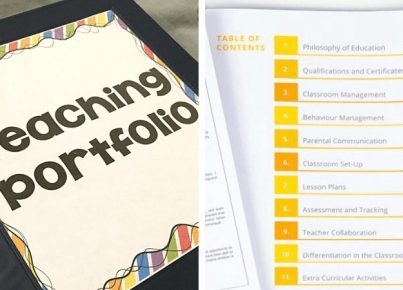Introduction:
In a world of evolving education systems and pedagogical methods, teachers are always on the lookout for new and engaging ways to improve teaching, learning, and team management. CPD Magazine is a comprehensive resource for educators that offers exclusive content highlighting creative ideas on how to optimize their teaching experiences. In this article, we will explore some of the innovative concepts that CPD Magazine shares with its teacher audience.
Creative ideas on teaching:
1. Gamification: Introducing game elements into the learning process can serve as a powerful motivator for students. CPD Magazine offers examples of educational games and activities designed to effectively communicate course material without sacrificing engagement.
2. Flipped classroom: CPD Magazine provides guidance on implementing flipped classroom models, in which students access course materials online before attending in-person sessions for discussions and collaborative work – an approach that promotes active learning and fosters critical thinking.
3. Interdisciplinary teaching: Linking various subjects exposes students to the interconnected nature of knowledge. CPD Magazine shares strategies for blending content from different disciplines into cohesive lesson plans that boost creativity and curiosity.
Learning best-practices:
1. Brain-based learning techniques: Drawing upon principles rooted in neuroscience and psychology, CPD Magazine provides tips for maximizing students’ cognitive abilities by tailoring teaching practices to accommodate different learning styles.
2. Project-based learning: This instructional methodology equips students with concrete problem-solving skills by posing real-world challenges relevant to their interests or community concerns. CPD Magazine offers diverse project ideas suitable for numerous subject areas.
3. Assessment strategies: Effective evaluation measures student progress at regular intervals throughout the school year. CPD Magazine suggests a variety of assessment methods, such as formative assessments, self-evaluations, and peer reviews, all designed to afford a multifaceted understanding of student performance.
Managing teams:
1. Positive reinforcement: An environment that rewards good behavior and acknowledges success fosters a supportive and nurturing classroom. CPD Magazine shares various incentive systems, including recognition boards, praise trees, and token economies to bolster motivation among students.
2. Emotional intelligence and classroom management: Educators must recognize the role emotional intelligence plays in navigating conflicts and mediating relationships among students. CPD Magazine explores ways teachers can cultivate empathy, self-awareness, and decision-making skills within their classrooms.
3. Collaborative teaching models: Team-teaching arrangements encourage educators to pool resources to create an integrated and inclusive learning experience. CPD Magazine explains different cooperation methodologies like parallel teaching, station teaching, and complementary instruction as avenues for interconnected lessons.
Teaching books:
CPD Magazine regularly reviews new and noteworthy educational literature aimed at supporting ongoing professional development for educators. Some notable titles include:
1. “Mindset” by Carol Dweck: This groundbreaking work offers insights into the power of adopting a growth mindset – believing that one’s capacities can be developed through dedication and hard work.
2. “The 5 Love Languages of Children” by Gary Chapman and Ross Campbell: Understanding each student’s unique emotional needs is essential for building strong teacher-student relationships.
3. “Visible Learning” by John Hattie: Hattie’s extensive research examines factors that influence student achievement, providing evidence-based approaches to maximize learning potential.
Conclusion:
At its core, CPD Magazine aims to empower educators with the knowledge and skill set required to successfully navigate the ever-changing landscape of teaching. By staying informed about best practices in teaching, learning, team management, and literature recommendations, educators can enhance their effectiveness in meeting the diverse demands of their students while fostering a lifelong love of learning.



